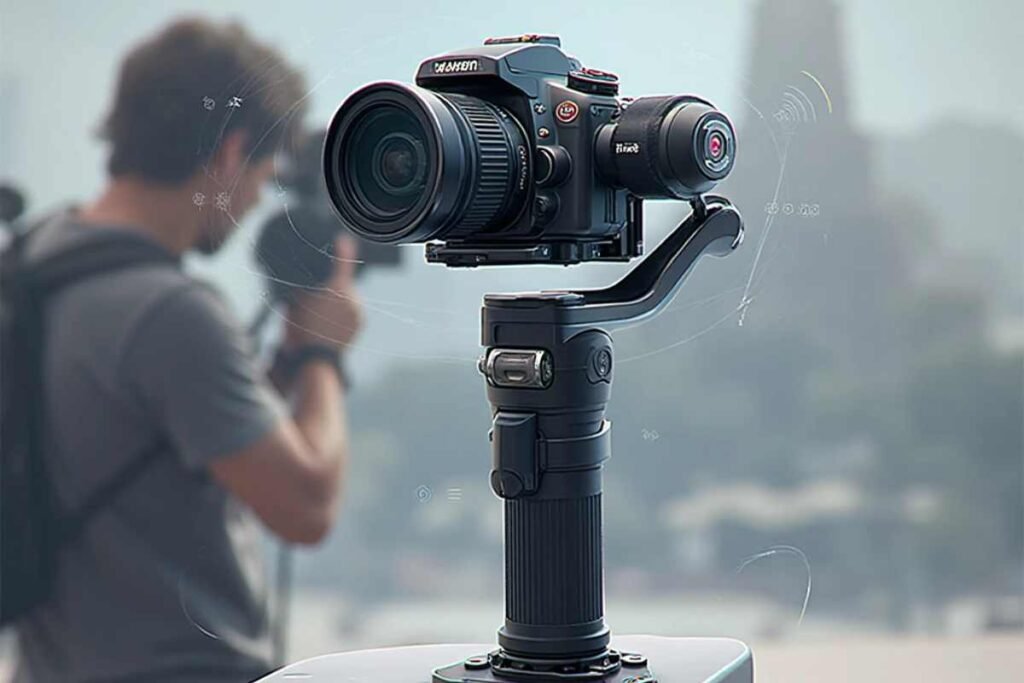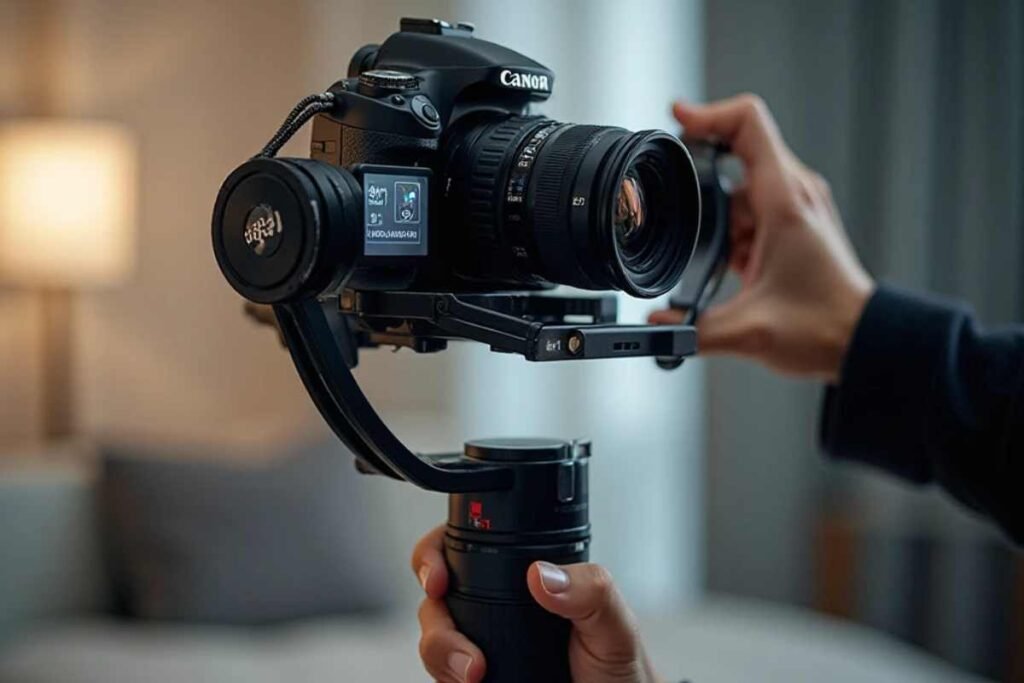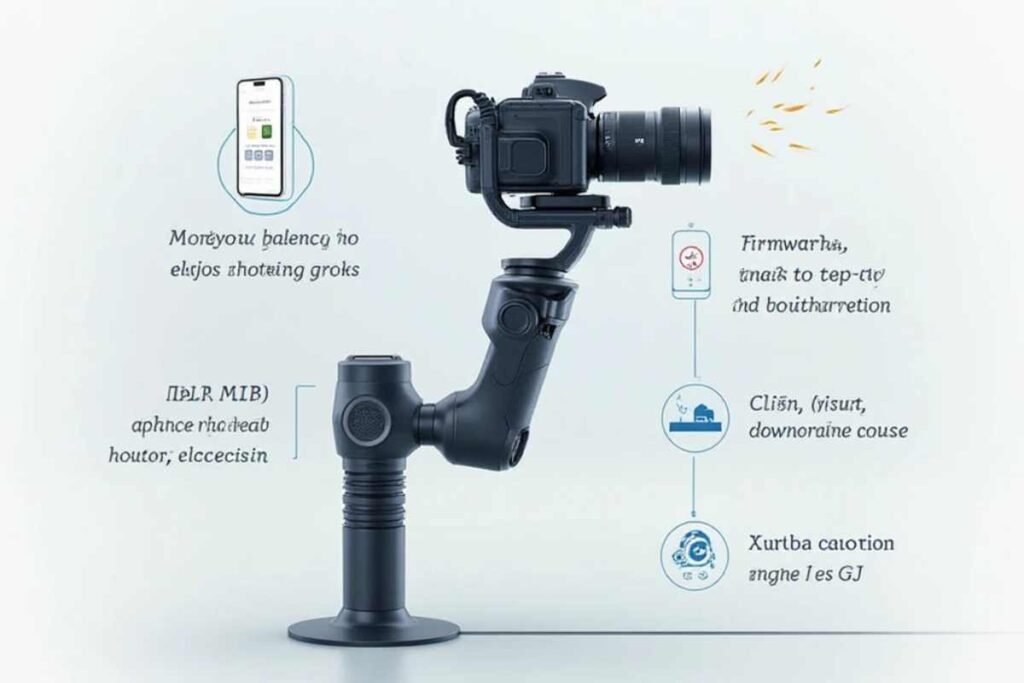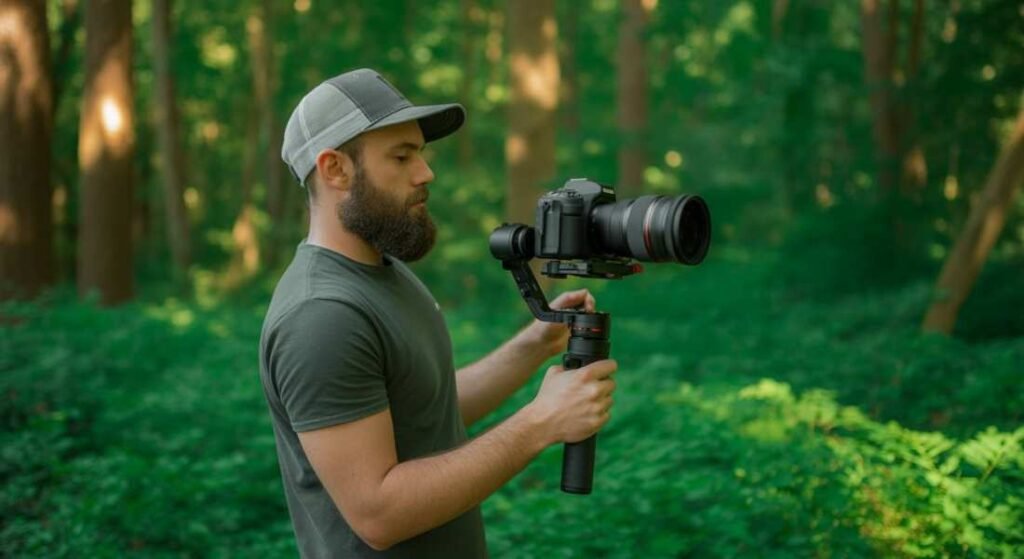A DLSR gimbal is an essential tool for filmmakers vloggers and content creators who want smooth professional-looking footage. By stabilizing your camera and eliminating shakes a gimbal transforms ordinary handheld shots into cinematic visuals. Whether you’re walking running or filming dynamic scenes a gimbal ensures every frame is steady and polished.
With a DLSR capturing creative camera movements becomes effortless. From sweeping cinematic pans to low angle tracking shots it allows full creative control while maintaining stability.
What is a DLSR Gimbal?

A DLSR gimbal is a mechanical stabilizer designed to hold and balance your DSLR or mirrorless camera. Its motorized system allows smooth camera movements compensating for hand shake and sudden motion. Gimbals use three axes pan tilt and roll to maintain the horizon level and stabilize footage. For beginners understanding these basic mechanics is crucial to using a gimbal effectively.
How DLSR Gimbals Work?
A gimbal combines sensors motors and software to detect motion. When you move the camera the gimbals motors counteract unwanted shake keeping your footage smooth. Most modern gimbals also come with modes like follow lock and pan giving creative control over the camera’s movement development-practices/.
Benefits of Using a DLSR Gimbal
Using a DLSR provides multiple advantages for photographers and videographers. Firstly, it ensures smooth footage even in action-packed sequences. Secondly it reduces fatigue compared to handheld shooting allowing longer filming sessions. Thirdly it enhances the cinematic quality giving your videos a professional finish. Whether you shoot weddings travel vlogs or short films a gimbal elevates the overall production value.
Key Features to Look for in a DLSR Gimbal
When choosing a DLSR gimbal several features matter. Look for payload capacity battery life and motor strength to support your camera setup. Additional features such as follow focus app integration, and customizable modes can significantly enhance creative control. High quality materials ergonomic grips and portability also affect usability especially for long shooting sessions.
Step by Step Guide: Setting Up Your DLSR Gimbal
Setting up a site properly is essential for smooth operation. First mount the camera securely on the gimbal platform. Next balance it by adjusting the tilt pan and roll axes until the camera remains level. Power on the gimbal and calibrate it using its software or mobile app. Finally select the desired mode for your shot whether follow pan or lock.
Balancing Tips for Beginners
To achieve perfect balance, ensure the camera doesn’t tilt forward or backward when the motors are off. Minor adjustments to counterweights and sliding mounts can make a huge difference. Balanced setup prolongs motor life and improves stabilization.
How to Use a Gimbal for Cinematic Shots?
Creating cinematic shots with a DLSR gimbal involves more than just stabilization. Use smooth movements plan your camera path, and experiment with different angles. Low angle shots tracking shots and reveal movements add a professional touch. Combining gimbal movements with lighting and composition techniques significantly elevates your visuals.
Common Mistakes to Avoid with a DLSR Gimbal

Many beginners make mistakes like overloading the gimbal with heavy accessories or improper balancing. Rapid or jerky movements can also reduce stabilization effectiveness. Another mistake is ignoring firmware updates which often include performance improvements. Being mindful of these issues ensures long term reliability and smooth footage.
Maintenance Tips for Your platform
To keep your DLSR gimbal functioning optimally, perform regular maintenance. Clean the motors and joints to prevent dust buildup. Check the battery health and firmware updates frequently. Avoid exposure to moisture, extreme heat or impact. Proper care extends the lifespan and maintains consistent performance.
Choosing the Right DLSR Gimbal for Your Needs
Selecting a DLSR depends on your camera type, shooting style, and budget. For heavy DSLR setups prioritize higher payload gimbals. For travel or lightweight shooting compact gimbals provide portability without compromising performance. Reading reviews and testing models can help identify the best fit for your creative needs.
Advanced Techniques for Using a DLSR Gimbal
Advanced users can explore techniques like time lapse hyper lapse and follow focus with a gimbal. Combining motorized gimbal movements with precise focus emerging-technologies/ adjustments can produce visually stunning results. Experimenting with slow-motion or multi-axis rotation adds a professional flair to your projects.
Integrating a DLSR Gimbal into Filmmaking Workflow
Using a DLSR seamlessly in your workflow enhances efficiency. Pre plan shots select the right gimbal mode and combine tripod or slider shots for variety. Syncing with audio recording lighting setups and camera settings ensures smooth production. Proper integration reduces post-production stabilization needs.
How a DLSR Gimbal Improves Vlogging?
Vloggers benefit immensely from a DLSR gimbal especially for on-the go shooting. Smooth footage during walking running or handheld shots makes content visually appealing. Compact gimbals with foldable designs allow easy travel, while ergonomic handles support extended vlogging sessions
Troubleshooting Common DLSR Gimbal Issues

If your DLSR shows erratic movement, first check the balance and firmware. Ensure the payload is within recommended limits. Sometimes, motor calibration or app reset solves glitches. Understanding basic troubleshooting keeps your gimbal ready for uninterrupted shooting
Conclusion
A DLSR gimbal is an indispensable tool for filmmakers and content creators seeking professional quality stable footage. From beginners to advanced users mastering gimbal setup usage and maintenance ensures cinematic results.
Investing in a good gimbal learning its features and practicing creative movements elevates video production to new heights. Whether for vlogging filmmaking or event coverage a gimbal is a game changer in visual storytelling.
FAQs
What is the main purpose of a DLSR gimbal?
A DLSR gimbal stabilizes your camera reducing shake and enabling smooth professional-looking footage.
Can I use any camera with a Site?
Most gimbals support specific payload ranges, so ensure your camera and lens fall within the recommended weight limit.
How do I balance my DLSR gimbal properly?
Adjust the tils roll and pan axes until the camera remains level without motor support then power on and calibrate.
What are the key features to consider when buying a gimbal?
Look for payload capacity motor strength battery life ergonomic design and additional creative modes.
How long does gimbal battery last?
Battery life varies by model but most gimbals provide 8 12 hours of continuous shooting with some offering quick swap batteries.
Can a DLSR gimbal be used for slow-motion videos?
Yes gimbals stabilize the camera even during slow motion or complex movements, ensuring smooth footage.


